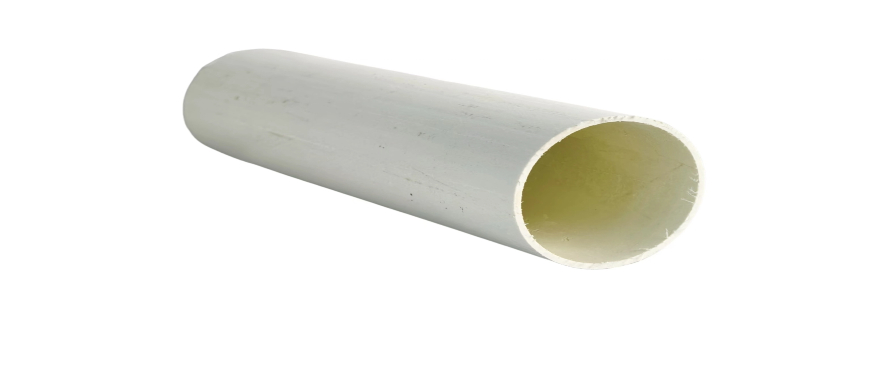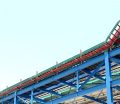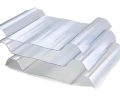
Fiberglass Reinforced Plastic (FRP) is a lightweight yet durable material designed for high-performance applications. It combines strength and versatility, making it suitable for various environments. The structural integrity of FRP allows it to endure demanding conditions, including exposure to chemicals and extreme temperatures. However, its unique properties mean traditional bonding methods, like welding, cannot be used. This is where fiberglass reinforced plastic glue becomes essential, providing a reliable way to join FRP components effectively. FRP is commonly used in construction, marine industries, and industrial applications. It supports structures like tanks, pipes, and architectural designs. In marine environments, it resists corrosion and wear, while in construction, it provides flexibility and strength. Fiberglass reinforced plastic glue is integral to ensuring secure, durable bonds across these applications.
How to Bond FRP Using Fiberglass Reinforced Plastic Glue
Fiberglass Reinforced Plastic (FRP) is a versatile material, but its unique properties require specific techniques and adhesives for effective bonding. This guide covers essential steps and considerations for achieving reliable adhesion using fiberglass reinforced plastic glue.
Surface Preparation
Proper surface preparation is crucial for strong bonds when using fiberglass reinforced plastic glue. Inadequate preparation can lead to weak adhesion or complete bond failure.
FRP surfaces often have contaminants like grease, oils, or dust that inhibit bonding. Preparing the surface ensures a clean, textured area for the glue to adhere. Neglecting this step can compromise the durability and strength of the bond. Thorough preparation extends the lifespan of bonded components, especially in demanding applications such as construction or marine environments.
Step-by-Step Process
- Degrease the Surface
Clean the surface with a suitable cleaner or isopropanol. This removes oils, dirt, and residues that hinder adhesion. - Light Abrasion
Use 320-grade grit paper or a red abrasive pad to lightly sand the surface. This enhances the surface area for bonding. - Remove Debris
After abrasion, clean the surface again to eliminate dust or loose particles. A clean surface ensures the glue forms a robust bond.
By following these steps, you can maximize the performance of fiberglass reinforced plastic glue in any application.
Selecting the Right Adhesive for FRP
Choosing the correct fiberglass reinforced plastic glue is critical for ensuring strong, lasting bonds. Different applications demand specific adhesive properties.
Factors to Consider
- Environmental Resistance
FRP is often exposed to moisture, chemicals, and UV rays. Adhesives must resist these conditions to maintain integrity over time. For example, marine applications demand glue that withstands constant water exposure without weakening. - Temperature Compatibility
FRP components in industrial settings face extreme temperatures. The selected glue must tolerate high heat without degrading or losing adhesion strength. - Load and Stress Durability
Adhesives should endure the mechanical stresses of FRP’s typical applications. Whether supporting heavy loads or withstanding vibrations, the glue should maintain its bond under pressure.
Understanding these factors helps you select fiberglass reinforced plastic glue suited to your specific needs, ensuring dependable results.
Types of Adhesives for FRP
Different adhesives have unique strengths and weaknesses. Selecting the best fiberglass reinforced plastic glue depends on your application and performance requirements.
Epoxy Adhesives
Epoxies, especially two-component systems, are ideal for FRP bonding. They offer superior strength, durability, and resistance to environmental factors. However, they require precise mixing and longer curing times. Their high performance makes them suitable for construction and industrial uses.
Cyanoacrylate Adhesives
Cyanoacrylate glue works well for quick fixes. Toughened grades provide enhanced impact resistance and flexibility. This adhesive is less effective for large-scale or high-stress applications but excellent for small repairs.
Polyurethane Adhesives
Polyurethane glue offers high flexibility and superior resistance to impact and vibration. It performs well in dynamic environments, such as vehicles or machinery. Its ability to maintain a strong bond under stress makes it a popular choice.
Structural Acrylic Adhesives
Structural acrylic adhesives bond well to rough or irregular FRP surfaces. They cure quickly and deliver strong adhesion even in challenging conditions, making them ideal for large-scale bonding tasks.
Advantages of Fiberglass Reinforced Plastic Glue
Durability in Challenging Conditions
Fiberglass reinforced plastic glue delivers exceptional durability in diverse environments. It withstands extreme temperatures, moisture, and chemicals, maintaining strong bonds over time. This advantage is particularly evident in marine applications, where exposure to saltwater and humidity is constant.
Versatility Across Applications
This glue adapts to various FRP uses, from construction to industrial machinery. Its compatibility with multiple adhesive types makes it versatile for different bonding needs, ensuring reliable performance.
Enhanced Load-Bearing Capabilities
FRP often bears heavy loads or experiences significant stress. The glue’s ability to distribute stress evenly enhances the structural strength of bonded components. This feature minimizes the risk of failure.
Improved Aesthetic Outcomes
Unlike mechanical fasteners, fiberglass reinforced plastic glue offers clean, seamless bonds. It eliminates visible hardware, ensuring a professional and polished appearance in finished products.
By understanding the preparation, adhesive selection, and advantages, you can achieve optimal results using fiberglass reinforced plastic glue. For specialized needs, we at GangLong Fiberglass can provide expert recommendations tailored to your project requirements.
Fiberglass Reinforced Plastic for Shower: Durable Wall Panels
Working with FRP Panels Using Fiberglass Reinforced Plastic Glue
FRP panels are widely used in construction, marine, and industrial applications due to their durability and lightweight design. Proper bonding techniques, including the use of fiberglass reinforced plastic glue, ensure reliable and long-lasting results. Below, we explore essential tips and strategies for working with FRP panels effectively.
Tips for Bonding FRP Panels
Surface Preparation for Large-Scale Panel Applications
Preparing the surface is essential for a strong bond. FRP panels often come with a smooth finish that can resist adhesion. Proper preparation ensures the fiberglass reinforced plastic glue adheres securely and uniformly.
- Clean the Surface Thoroughly
Remove dust, grease, and other contaminants using isopropanol or a similar cleaner. This eliminates barriers to effective bonding. - Lightly Abrade the Surface
Use sandpaper or abrasive pads to create a slightly rough texture. This increases the surface area and improves adhesive grip. - Final Cleaning
After sanding, wipe the surface again to remove any residual particles. This step prevents weak spots in the bond.
Following these steps ensures a strong connection between FRP panels and their bonding surfaces, even for large-scale applications.
Choosing Adhesives for Seamless Bonding
Selecting the correct adhesive is critical when using fiberglass reinforced plastic glue. FRP panel applications vary, so adhesives must match the specific conditions.
- Epoxy Adhesives for Heavy Loads
Two-component epoxies are ideal for bonding FRP panels in high-stress environments, offering durability and resistance to environmental factors. - Polyurethane Adhesives for Flexibility
Polyurethane glue provides high flexibility, making it suitable for applications requiring impact resistance or dynamic movements. - Acrylic Adhesives for Quick Curing
Structural acrylic adhesives are great for projects that demand fast curing times and strong bonds on uneven surfaces.
Choosing the right glue ensures seamless bonding for both functional and aesthetic applications.
Avoiding Common Issues When Using Fiberglass Reinforced Plastic Glue
Preventing Warping, Cracking, and Poor Adhesion
Warping and cracking can occur if FRP panels are bonded improperly. Poor adhesion often results from insufficient surface preparation or incorrect glue selection.
- Proper Temperature Control
Ensure the working environment meets the adhesive’s temperature range to avoid curing issues or bond weakening. - Apply Even Pressure During Bonding
Use clamps or weights to evenly distribute pressure across the bonded area, minimizing the risk of uneven adhesion or air pockets. - Monitor Cure Times
Allow sufficient curing time as specified by the adhesive instructions. Rushing this step can compromise bond strength.
Taking these precautions reduces the likelihood of defects and enhances the overall quality of the bonded panels.
Proper Storage and Maintenance of FRP Panels
Storing FRP panels correctly ensures their longevity and maintains their suitability for bonding with fiberglass reinforced plastic glue.
- Avoid Prolonged UV Exposure
Store panels in shaded or indoor areas to prevent UV damage that weakens their surface integrity. - Control Humidity Levels
Excessive moisture can lead to surface contamination or degradation. Maintain dry storage conditions to preserve panel quality. - Inspect Panels Regularly
Check for any damage, contamination, or warping before starting the bonding process. Early identification prevents problems during adhesion.
By following these guidelines, FRP panels remain in excellent condition, ensuring they bond effectively and perform reliably in their intended applications.
We at GangLong Fiberglass understand the importance of high-quality adhesives and preparation techniques. Our expertise in fiberglass reinforced plastic glue and FRP applications ensures your projects succeed with durability and precision. Let us help you achieve outstanding results.
Benefits of Fiberglass Reinforced Plastic for Glazing Materials
Where to Find Fiberglass Reinforced Plastic Glue
Fiberglass reinforced plastic glue is essential for bonding FRP materials in construction, marine, and industrial applications. Sourcing the right adhesive ensures the durability and success of your projects. Here, we discuss various ways to find fiberglass reinforced plastic glue and what to consider when making a purchase.
Local Suppliers
Suggestions for Sourcing FRP Glue from Local Stores
Local suppliers are often the first choice when sourcing fiberglass reinforced plastic glue. They provide immediate access and personalized advice.
- Hardware and Specialty Stores
Many hardware stores stock adhesives specifically designed for FRP. Visiting these locations allows you to assess the options directly. - Construction Supply Outlets
Suppliers specializing in construction materials often carry FRP adhesives. These outlets may also offer bulk purchase discounts. - Customer Service Support
Local suppliers can offer guidance on the best adhesive for your application, based on environmental and performance needs.
Shopping locally provides the advantage of hands-on product evaluation and immediate availability, ensuring your project stays on schedule.
Online Options
Benefits of Ordering Adhesives Online for FRP Projects
Online platforms have become a convenient option for finding fiberglass reinforced plastic glue, offering extensive product varieties and delivery options.
- Wider Selection
Online stores often provide access to a broader range of adhesives compared to local suppliers. This is particularly useful for specialized requirements. - Detailed Product Descriptions
Many online retailers include comprehensive descriptions, user reviews, and application guides, helping you make informed choices. - Convenience and Accessibility
Ordering online saves time and effort, especially for remote locations where local suppliers may not be available.
Despite the convenience, ensure you verify the authenticity and compatibility of the adhesive with your specific FRP project.
Factors to Consider When Buying Fiberglass Reinforced Plastic Glue
The cost of fiberglass reinforced plastic glue can vary significantly, but price should not compromise quality.
- Balance Cost and Performance
Inexpensive adhesives may save money upfront but fail under stress or harsh environments, leading to costly repairs later. - Consider Application Demands
High-quality glue designed for marine or industrial use is worth the investment for projects exposed to extreme conditions. - Evaluate Longevity
Durable adhesives reduce long-term costs by minimizing the need for maintenance and reapplications.
Selecting a reliable adhesive balances initial cost with long-term savings, ensuring strong and durable bonds.
Availability of Technical Support for Adhesive Selection
Technical support is crucial when choosing the right fiberglass reinforced plastic glue for your project.
- Expert Recommendations
Reputable suppliers provide advice tailored to your specific needs, such as environmental resistance or stress endurance. - Documentation and Guidelines
Suppliers offering detailed product information, including safety data sheets and usage instructions, can simplify the selection process. - After-Sales Support
Access to customer support for troubleshooting and inquiries ensures proper application and performance of the adhesive.
At GangLong Fiberglass, we pride ourselves on offering expert guidance and top-quality adhesives for FRP applications. Contact us to find the perfect solution for your bonding needs.
Whether shopping locally or online, choosing the right fiberglass reinforced plastic glue ensures the strength and longevity of your FRP projects. By considering factors such as price, quality, and technical support, you can make an informed decision and achieve the best results.
Benefits of Fiberglass Reinforced Plastic Fire Rating Panels
Achieving Success with Fiberglass Reinforced Plastic Glue
Fiberglass Reinforced Plastic (FRP) is a versatile material that requires specific techniques and adhesives for reliable bonding. The use of fiberglass reinforced plastic glue ensures strong, durable, and long-lasting connections when proper methods are followed. This conclusion highlights best practices, the significance of preparation, and final considerations for successful FRP applications.
Best Practices for Bonding FRP
When working with FRP, following structured techniques maximizes the performance of fiberglass reinforced plastic glue.
- Thorough Surface Preparation
Clean, sand, and degrease FRP surfaces to eliminate contaminants and improve adhesion. A well-prepared surface is the foundation for strong bonds. - Selection of Appropriate Adhesive
Different applications require adhesives tailored to environmental conditions, stress levels, and durability needs. Choose glue that aligns with your specific project demands. - Correct Application Techniques
Apply glue evenly and use sufficient clamping pressure to prevent air pockets. Allow proper curing time for the adhesive to achieve its maximum strength.
By adhering to these practices, FRP components can perform effectively under demanding conditions.
Importance of Preparation and Adhesive Selection
Proper preparation and the right choice of fiberglass reinforced plastic glue play a critical role in achieving strong and reliable bonds.
- Enhanced Bond Strength
A clean and abraded surface ensures maximum adhesive contact, resulting in a more robust connection. - Long-Term Durability
Choosing the right adhesive minimizes the risks of bond failure under harsh environments or mechanical stress. - Improved Efficiency
Following preparation protocols reduces the likelihood of rework, saving time and resources in both small and large-scale projects.
At GangLong Fiberglass, we emphasize the importance of preparation and provide guidance to ensure the optimal selection of adhesives for your FRP projects.
Final Thoughts on Durable FRP Applications
The use of fiberglass reinforced plastic glue ensures that FRP applications meet both functional and aesthetic demands. By combining proper preparation, adhesive selection, and careful application, you can achieve long-lasting and dependable results.
FRP’s versatility makes it ideal for various industries, but its success depends on attention to detail during the bonding process. With the right approach, your FRP projects will not only withstand environmental challenges but also maintain their integrity for years to come.
We at GangLong Fiberglass are here to support your journey with expert advice and premium adhesive solutions. Let us help you bring your FRP applications to life with confidence and precision.
FAQs about Fiberglass Reinforced Plastic Glue
The best glue for fiber reinforced plastic depends on the specific application and conditions. Epoxy adhesives are widely regarded as ideal for their strength, durability, and resistance to environmental factors. Polyurethane adhesives also perform well, offering flexibility and high impact resistance. Structural acrylic adhesives are suitable for rough surfaces and quick curing. When selecting glue, consider the environment where the FRP will be used, including exposure to moisture, heat, or chemicals. Proper surface preparation, such as cleaning and sanding, ensures the glue adheres effectively. Each project may require a different type of adhesive based on the demands and stress levels.
Epoxy adhesives are among the best options for bonding fiberglass to plastic. They provide strong, durable bonds and excellent resistance to environmental conditions. Polyurethane adhesives are another good choice, as they offer flexibility and can withstand dynamic stresses. Cyanoacrylate adhesives work for smaller-scale projects or quick fixes, though they may not be ideal for heavy loads. Proper preparation of both surfaces is critical. Cleaning with isopropanol and light sanding improves adhesion by creating a suitable bonding surface. Always select an adhesive compatible with both materials to ensure the bond holds securely under stress.
Liquid nails can bond FRP in certain cases, but it is not always the most effective option. Its performance depends on the specific type of liquid nails and the environmental conditions. For applications requiring strong, durable bonds, epoxy or polyurethane adhesives are often better suited. Liquid nails may work for smaller projects or less demanding applications. It is essential to prepare the surface properly before application, including cleaning and light abrasion. If using liquid nails, ensure the product specifications match the project requirements and provide the necessary strength and resistance.
FRP glue is designed to bond a wide range of materials effectively. It adheres well to FRP, metals, plastics, wood, and concrete. Its versatility makes it suitable for use in construction, marine, and industrial projects. However, the surface must be prepared correctly to ensure strong adhesion. Clean surfaces free of grease, dust, and contaminants are essential. Light sanding can improve the bonding area, enhancing the glue’s effectiveness. While FRP glue bonds to many materials, checking compatibility with specific surfaces is important to achieve optimal results.

As the editor of GangLong Fiberglass, I have years of experience and in-depth research, focusing on cable tray products, fiberglass solutions, and grille systems. I incorporate years of industry insights and practical experience into every content, committed to promoting the progress of the industry. At GangLong Fiberglass, my commitment is reflected in every product, from innovative cable trays to durable fiberglass solutions and sturdy grille systems. As an authoritative voice in the industry, my goal is to provide valuable information to professionals and businesses and promote forward-looking solutions.


